Making dumpling wrappers from scratch couldn’t be easier! In this section of my ultimate dumpling guide, you will learn to master this basic skill with ease.
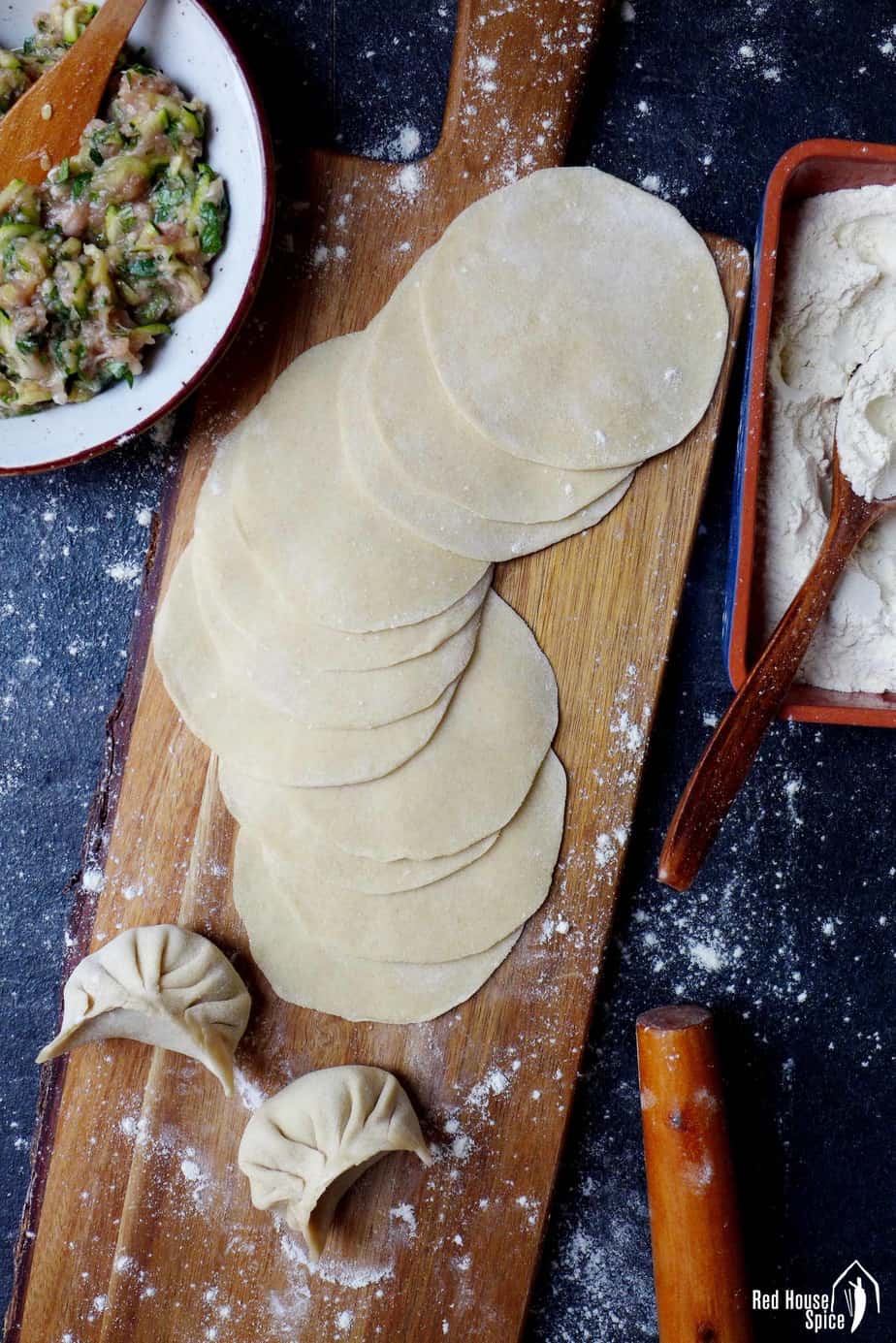
With the Chinese New Year (Spring Festival, 春节) fast approaching, I’ve decided to create a series of posts on Chinese dumplings to say THANK YOU to my lovely readers for another year of support.
This ultimate guide will cover all aspects of homemade dumplings, the iconic dish of Chinese cuisine. Today, we start the journey with homemade dumpling wrappers (饺子皮).
Jump to:
Which flour to use?
Let’s get down to the basics: what kind of flour is required for Chinese dumplings? Contrary to popular belief, you don’t need to buy flour produced in China or flour specifically labeled as “dumpling flour”. You can produce excellent dumpling wrappers using regular flour sold in your local shop.
The most common all purpose flour works just fine! However, it’s a good idea to understand your flour.
- Flour with a medium level of gluten works best. The dough is easy to work with. The cooked wrappers are tender but still have a pleasurable chewy texture.
- The gluten level varies in all purpose flour sold in different countries. Check the protein content on the nutrition label (per 100g flour).
- 10-11g = ideal
- 12-14g = more resilient
- under 10g = soft
The good news is that you can alter the texture if you wish.
- Like your wrapper softer: add some corn starch to the flour or make a hot water dough instead of regular cold water dough (Continue reading to find out how).
- Prefer a more resilient texture: add a little salt to the dough.
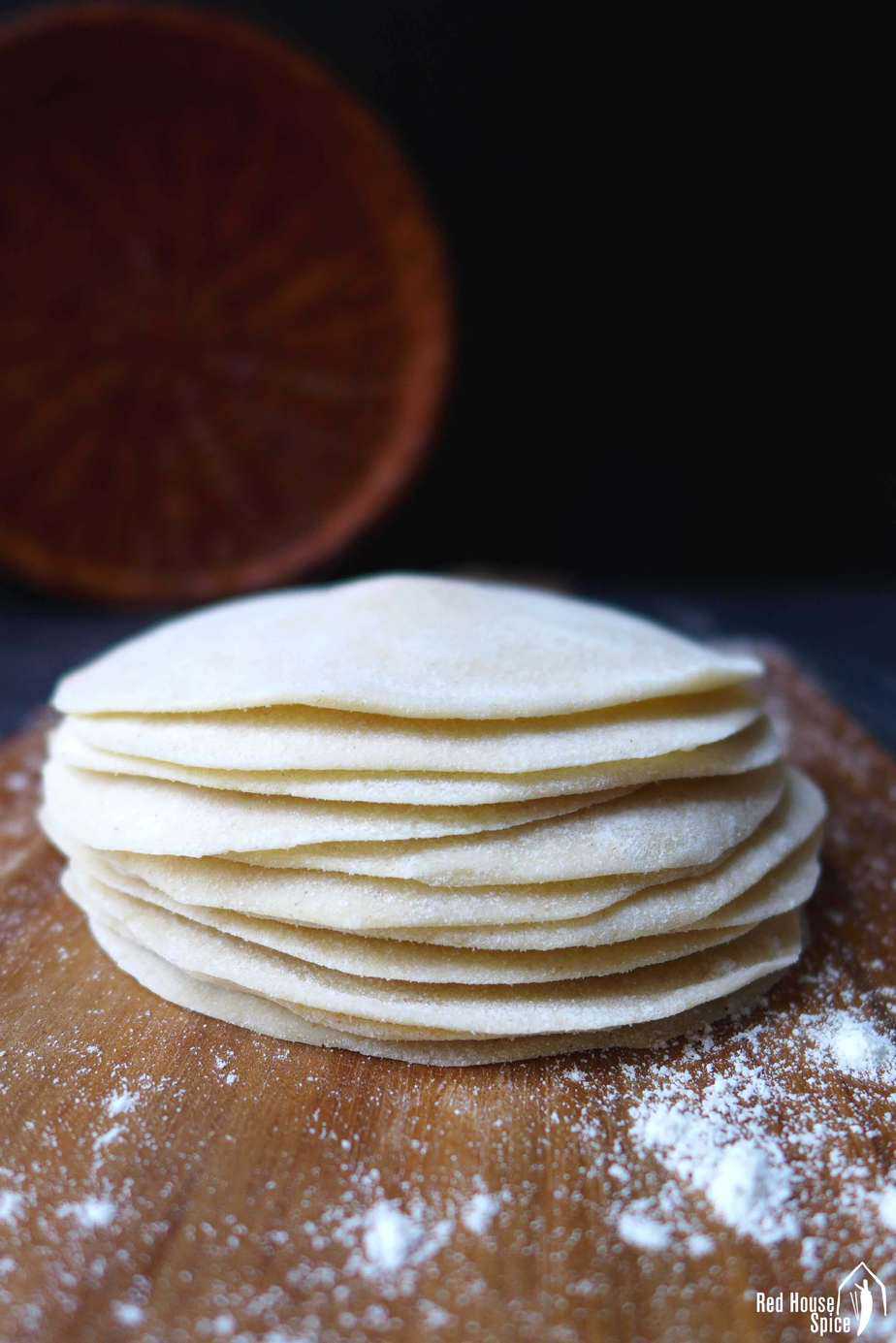
The flour water ratio
For making dumping wrappers, you would need a reasonably soft dough which is easily rolled but not so soft that it sticks.
Ratio:
- 250g / 2 cups all purpose flour
- 125-130ml / 0.5 cup water
*Please be aware that it’s less accurate to measure by cups.
This is the perfect ratio for me when using British regular plain flour (aka all purpose flour) which has a medium gluten level (10-11g protein per 100g flour). If you are using flour from another country, it might have a different water absorbing capacity. In general, the higher the protein content, the more water you would need to achieve the same consistency.
You might need some trail and error to find your very own perfect ratio. If you are new to homemade dumpling wrappers, I suggest you make the dough by hand for the first time instead of relying on a dough kneading device. This way you will be able to constantly “feel” the readiness of the dough and add more flour or water as required.
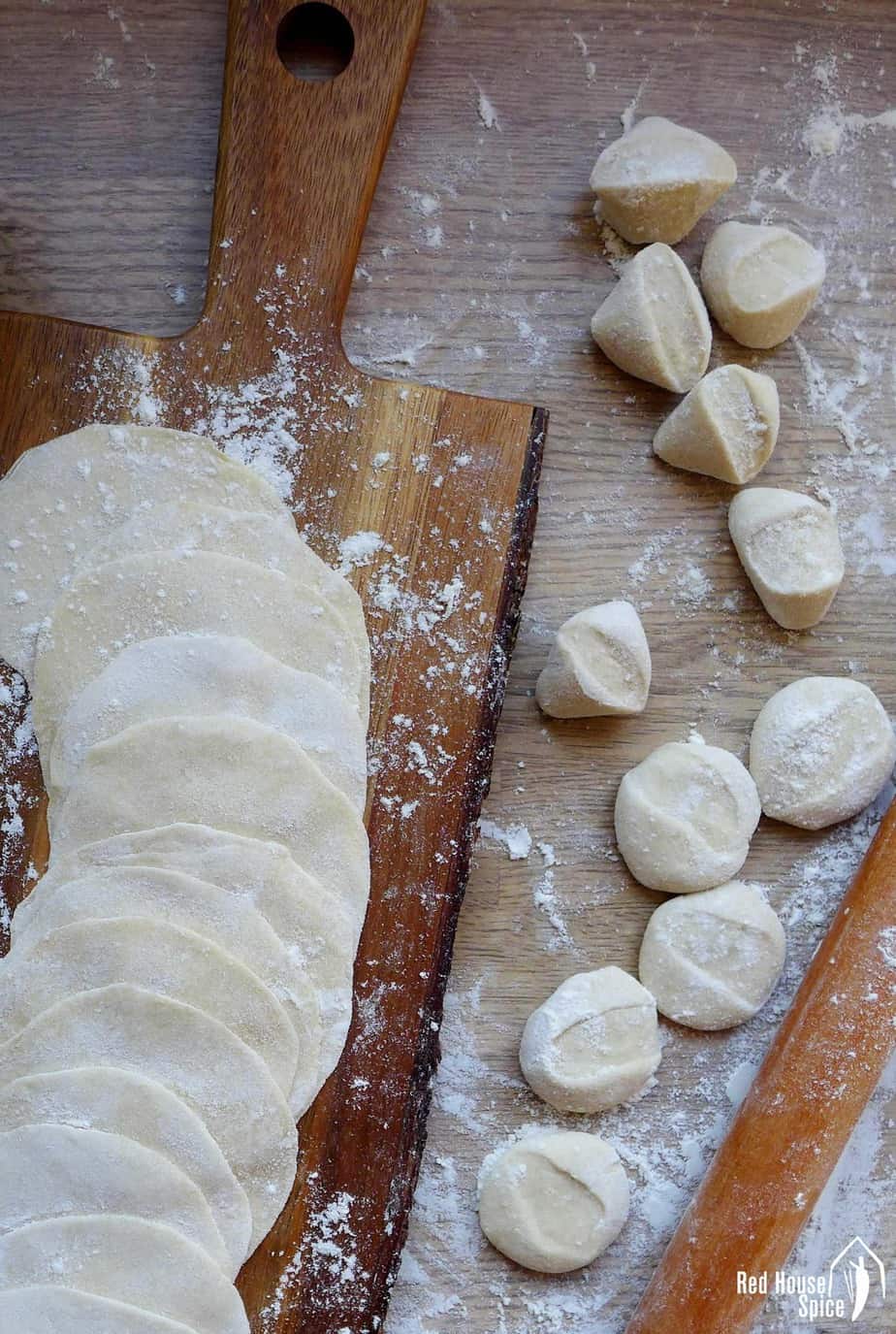
Make the dough by hand
I usually mix flour and water in a bowl. You can also do it directly on a flat floured surface. Add water to the flour gradually. Gently mix with a pair of chopsticks / spatular until no more loose flour can be seen. Then combine and knead with your hand.
At this stage, the dough ball should be medium firm and have a rough appearance. Leave it to rest (covered) for 10-15 minutes then knead it into a smooth ball. Cover and rest the dough a second time for at least 30 minutes.
The resting process will help to soften the dough. The longer it rests, the softer it becomes. If you use flour high in gluten, it’s better to rest it a little longer. A Chinese cook would say the finished dough should be “as soft as an earlobe”.
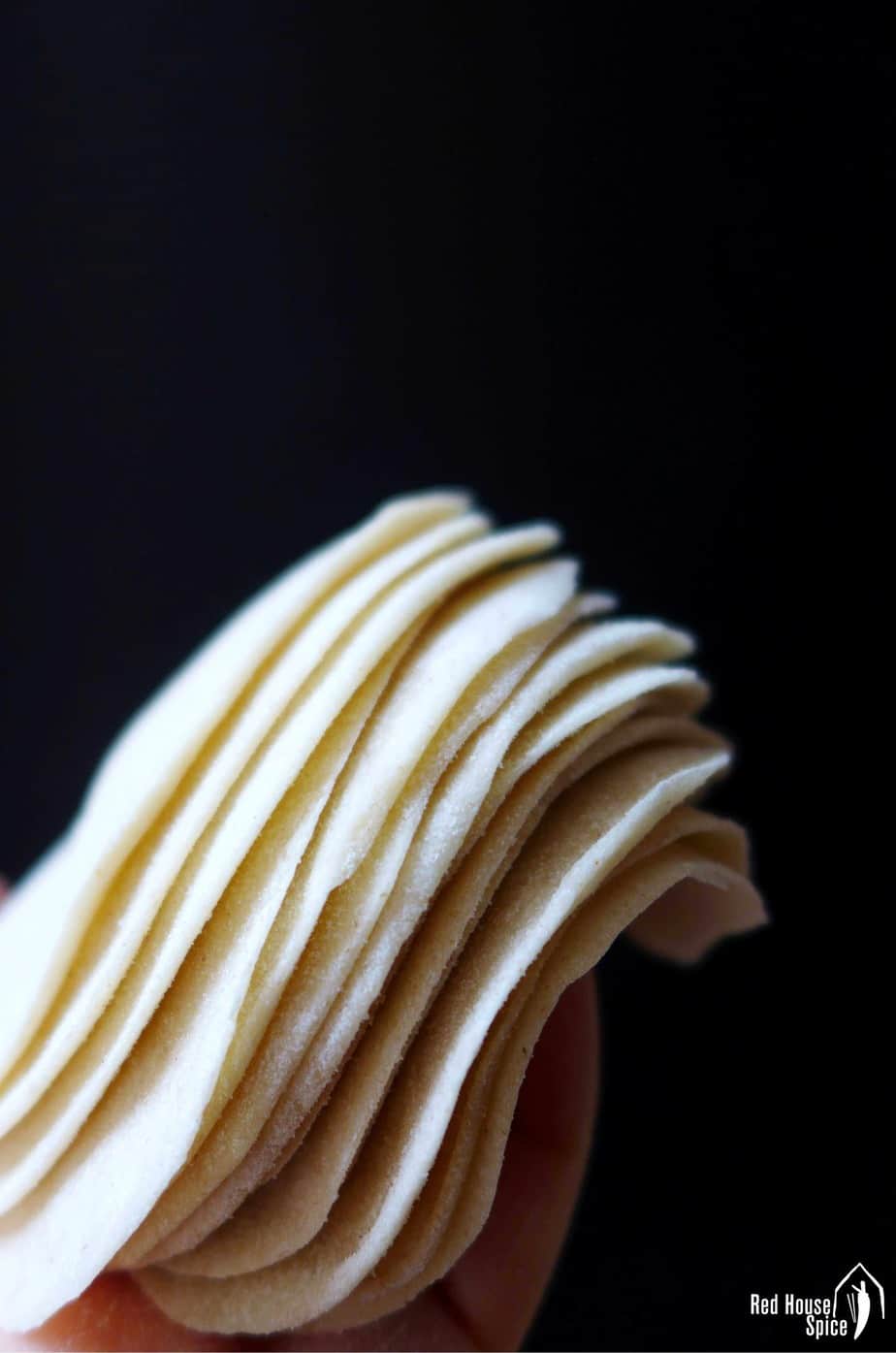
Other dough varieties
What I have outlined is the most commonly used all purpose dough for Chinese dumplings. If you prefer a dough that is more supple to work with and more tender when cooked, I recommend another two types of dough:
- Hot-water dough. Let’s say the total water required is 300ml. Firstly, mix the flour with 200ml of boiling water. Then add 100ml of room temperature water to the mixture.
- Semi-starchy dough. Replace about ¼ of the flour with corn starch. Don’t forget to sift to ensure an even mix. Wrappers made of this dough have a lovely shiny appearance when cooked and are tender on the palate.
These two types of dough work perfectly when the dumplings are either steamed or pan-fried. However, for water boiled dumplings I would suggest you use the regular dough.
* Some Cantonese dim sum dumplings use transparent wrappers that are entirely made of starch. Please refer to my post “Har gow: crystal prawn dumplings (虾饺)” for the wrapper recipe.
Shape the wrappers
Here comes the most intimidating part: rolling the dough into individual wrappers one at a time. I admit it’s a labour-intensive, time-consuming job. But when you get the hang of it, you can make them quite efficiently. Here are the steps (Please refer to the the video above):
- Make a loop / rope with the dough.
- Cut it into equal sections.
- Press each piece into a small disc with the palm of your hand.
- Use a rolling pin to flatten it into a thin disc.
Ideally, the wrappers should be thicker in the middle and thinner around the edge. So the edge of the dumpling wouldn’t be too thick after sealing. To achieve a good result when rolling out the dough, a particular hand coordination is required.
One hand moves the rolling pin halfway over the dough and then rolls back. The other hand turns the wrapper a little each time in a circular motion. Roll, turn, roll, turn…(see how it works in my video above). Once you’ve got the rhythm right, the perfect wrappers can be made in no time!
* Always remember to dust with flour if the dough sticks. Cover the unused dough to prevent it from drying out.
* Alternative way: Use a pasta maker to roll the dough into a thin sheet (similar to how you make wonton wrappers). Then cut out wrappers with the rim of a wine glass or something similar.
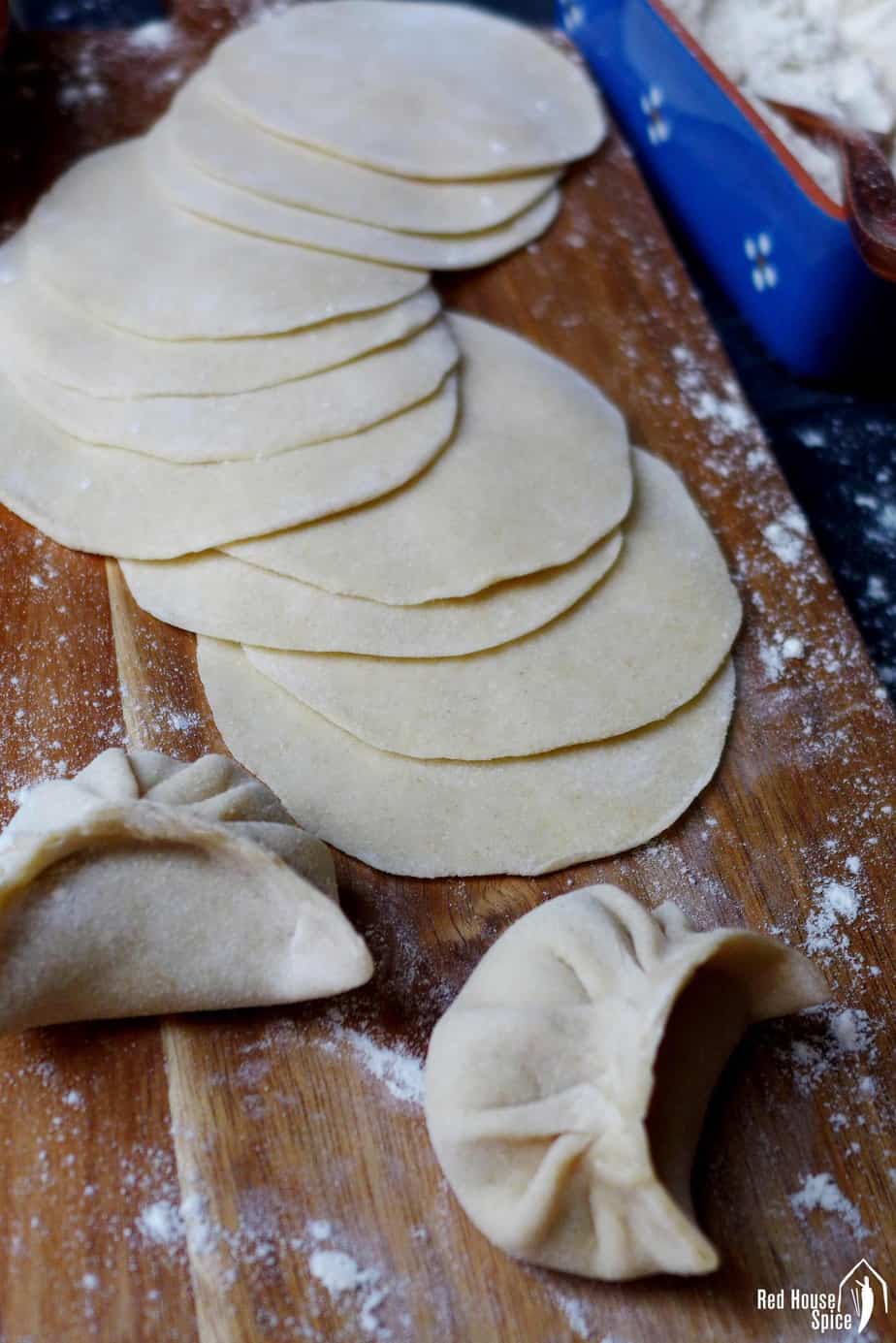
Store the wrappers
Freshly made dumpling wrappers need to be used immediately. Otherwise they become dry and difficult to shape. In Chinese households, making dumplings is usually a family activity in which everyone participates. So the wrappers are always used straightaway by those who are in charge of dumpling assembly.
If you are working alone, remember to roll less than 10 wrappers at a time and assemble them. Then get back to your rolling action to produce the next batch. Don’t forget to dust with flour if you wish to pile up the dumpling wrappers.
Make them in advance: Homemade wrappers can be frozen. Sprinkle extra flour (or even better, use cornstarch) in between each wrapper. Place them in an air-tight plastic bag (squeeze out the air as much as possible). Defrost in the fridge then use them straightaway.
Use up the leftovers: No dough is wasted in my Red House kitchen. I always use leftover dumpling dough to cook Cong You Bing (Scallion Pancakes). Even it’s just enough for a small one, I think it’s worth the effort.

Other dumpling recipes
Now that the wrappers are made, why not check out other dumpling-related posts?
📋 Recipe
Love this recipe? Please leave a 5-star 🌟🌟🌟🌟🌟 rating in the recipe card below & if you REALLY like it, consider leaving a comment as well!
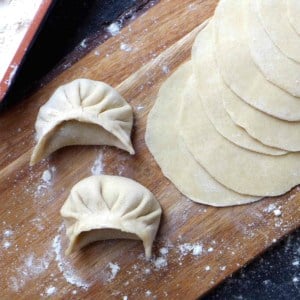
Homemade dumpling wrappers (饺子皮)
Ingredients
For making around 30 wrappers
- 250 g all-purpose flour - about 2 cups, plus some for dusting
- 130 ml water - ½ cup+2 teaspoon (see note 1)
Instructions
- Add water to the flour gradually. Gently mix with a pair of chopsticks / spatular until no more loose flour can be seen. Then combine and knead with your hand. Leave to rest covered for 10-15 minutes then knead it into a smooth dough (see note 2).
- Cover and rest the dough again for 30-60 minutes until it becomes soft (Chinese cooks would say “as soft as an earlobe”).
- Make a loop with the dough then divide it into four parts. Roll one part (cover the rest to prevent them from drying out) into a rope then cut into 7-8 equal sections.
- Press each piece into a small disc with the palm of your hand. Then use a rolling pin to flatten it into a thin disc. Dust with flour if the dough sticks (Please refer to the video below).
- Use the fresh wrappers immediately. If you wish to freeze them for later, sprinkle extra flour in between each wrapper. Pile them up then place into an air-tight plastic bag (squeeze out the air as much as possible). Defrost in the fridge then use them straightaway.
Video
NOTES
NUTRITION
NUTRITION DISCLOSURE: Nutritional information on this website is provided as a courtesy to readers. It should be considered estimates. Please use your own brand nutritional values or your preferred nutrition calculator to double check against our estimates.


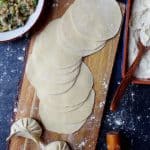
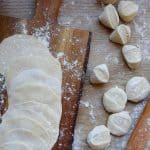
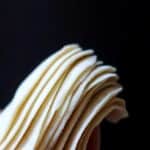
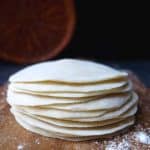
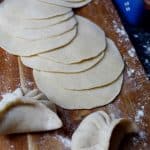
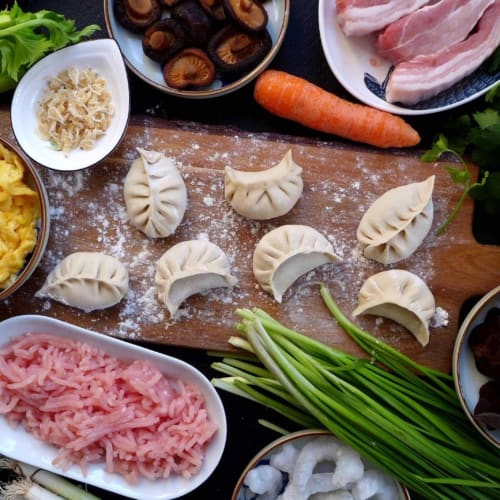
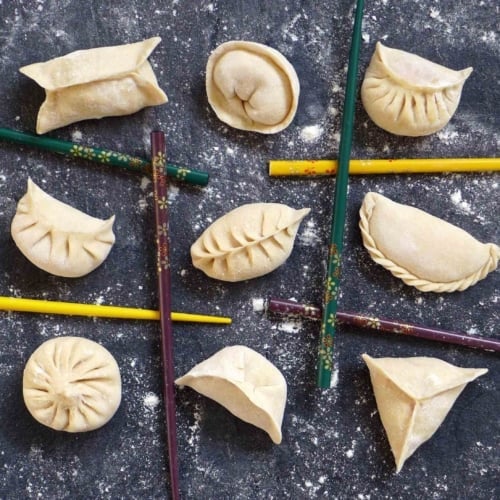
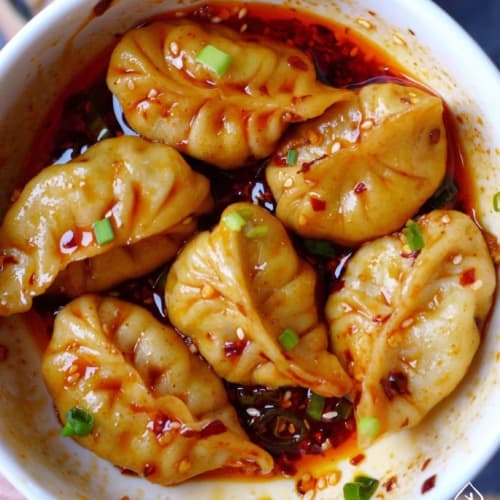
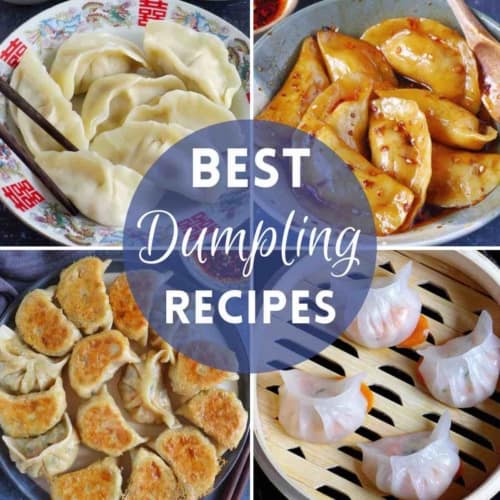
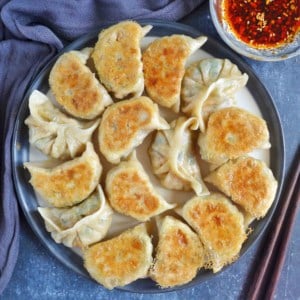

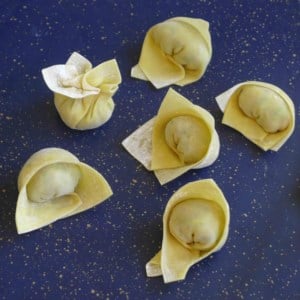
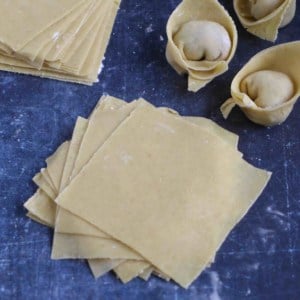
Just made these wrappers tonight and they were so easy and turned out amazing! We did the hot water method
Lovely to hear that!
Hello, minerolled beautifully but was too soft to make any shapes. Any idea what I did wrong. However on my first attempt they were prefect 🤣
Hi Kay! It sounds like your dough is a little too soft. As I mentioned in the post, flour of different types/brands has different water absorption capacities. I’d suggest you either add a litter more flour or slightly reduce the water quantity.
Hi there! Can i make them and put them in the fridge to use the following day? Or do you rather suggest just freezing them?
If you’ve already rolled out the wrappers, freeze them (with flour in between to avoid sticking). Or, keep the dough in the fridge and use it the next day to make wrappers
I’m not familiar with making any type of dough. So I don’t know how long I should knead the dough. In your recipe , how long do you knead it the first time (before first rest time) and the second time (before second test time). Thanks!
If you knead by hand, combine everything to form a ball then knead 1-2 minutes until no loose flour is left and the dough looks even in consistency (the surface may look rough but it’s ok at this stage). After resting for 10-15 minutes, knead for 2-3 minutes until the dough becomes very smooth. If using a stand mixer, you can knead it to a smooth texture in one go (about 8 mins on low speed). Hope this helps!
Hello! weird, weird question, but why do we rest the dough? thanks!
The resting process allows the gluten proteins in the flour to “connect” with one another. This networks helps to hold the dough together and makes the dough more stretchy and elastic.
Oh! thank you! good recipe by the well!
Worked perfectly first time. Thanks for a super easy recipe.
That’s wonderful to hear!
Hi
Do you know if this would work gluten free flour.
Ours has Xanthan gum in it,
It’s all purpose.
I just don’t want to use something like chickpea flour or something.
Please answer
Unfortunately, gluten free flour wouldn’t work for this recipe. To make gluten free dumplings, you may follow my recipe for Har Gow. In this case, use wheat starch that’s labeled as “gluten free” as regular wheat starch contains a very small amount of gluten.
I tried this using 2/3 cup boiling water and 1/3 cup room temperature water and after combining and letting it sit for 15 minutes, I tried to knead it but it was super sticky. I’m very unfamiliar with working with flour for making dough, so I feel a little clueless. What could I have done to help myself? Thanks for the recipe!
Sorry to hear that Molly! I suspect that you’ve misunderstood the measurements. For the hot-water dough, I mentioned in the recipe notes that you’d need replace 2/3 “PART” of the water with boiling water. That means two thirds of the water quantity suggested in the recipe (not 2/3 “CUP”).
Hope this helps!
Is it possible to use double zero flour (00 flour) if you don’t have all purpose flour?
Yes you can use 00 type flour for sure.
My dough always shrink everytime I tried to roll them out. I rested the dough long enough.
Why so elastic and hard to handle?
Thanks!
Sorry to hear that! I don’t know how closely you’ve followed my recipe. Here are some reasons which could cause shrinking: The flour you use has a very high gluten content (e.g.14g protein per 100g flour); after resting the dough has been kneaded again before rolling. Both high gluten content and over kneading can lead to a strong gluten network in the dough making rolling out difficult.